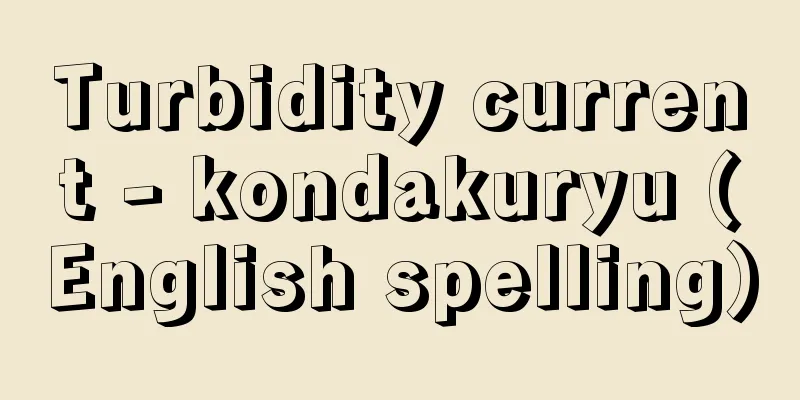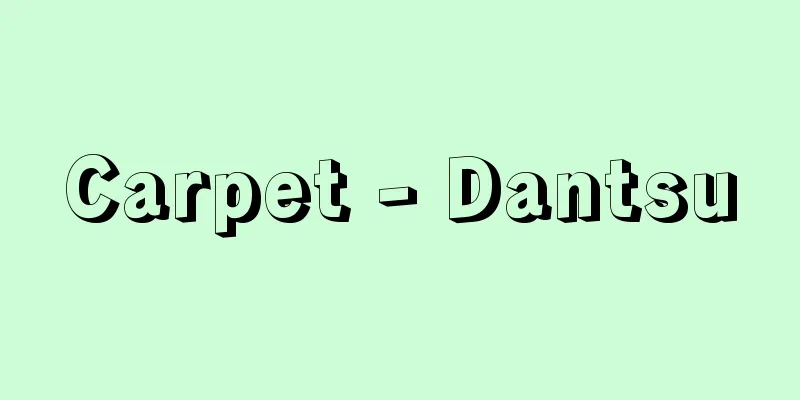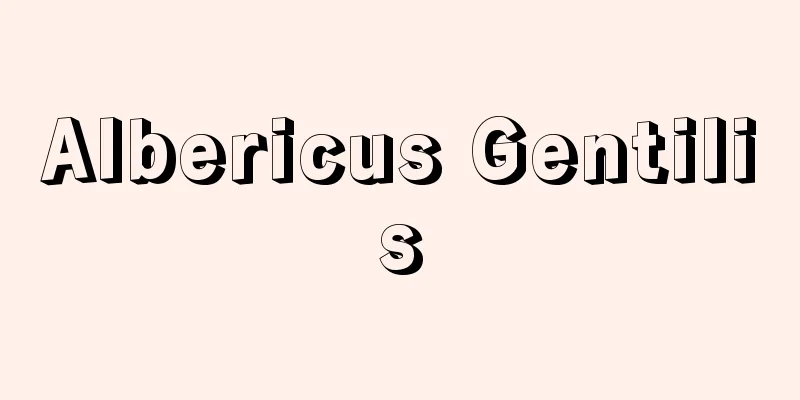Turbidity current - kondakuryu (English spelling)

|
A density current in which unconsolidated clastic particles are stirred up in water, becoming turbid and denser than the surrounding water, and flow down the bottom slope under the influence of gravity, spreading over the flat bottom surface. Also called turbidity current. It carries large amounts of clastic material to the deep sea floor, where the water flow is usually weak and therefore does not transport sand and other clastic material. It is known to occur not only on the sea floor but also on the lake floor. Causes of stirring and turbidity of clastic particles on the sea floor slope include submarine landslides triggered by earthquakes, instability due to an excessive supply of clastic material to the slope, and the effects of waves. As turbidity currents flow downhill, they can erode the slope and create a submarine canyon. If the speed is fast enough when they reach the flat deep sea floor, they can erode the semi-consolidated mudstone on the seafloor, forming a fan-shaped depression called a flute mark. As the speed of the turbidity current gradually decreases, it can no longer hold the clastic particles, and so the coarse particles settle on the seafloor in order, forming graded bedding. Silt and clay-sized particles are retained in the seawater even when the speed of the turbidity current slows down considerably, so they take a long time to deposit on top of the sandstone that shows graded bedding. The strata deposited by turbidity currents are called turbidites. Within a single layer of turbidites deposited by a single turbidity current, regular stacking of characteristic sedimentary structures is observed. From the bottom, it is divided into five sections: (1) graded bedding section, (2) lower parallel lamination section, (3) cross-lamination section, (4) upper parallel lamination section, and (5) mudstone section, and is called the Bouma sequence. Many turbidites do not have all five sedimentary structures of the Bouma sequence, and many only have graded bedding section and mudstone section. Turbidites form thick deposits in which sandstone and mudstone layers showing graded bedding are rhythmically interlaminated. Some of the strata called flysch are turbidites. [Akihiro Murata] [Reference] | | | | | |Source: Shogakukan Encyclopedia Nipponica About Encyclopedia Nipponica Information | Legend |
|
未固結の砕屑(さいせつ)粒子が水中で攪拌(かくはん)され混濁し、周囲の水よりも密度の高い状態となって、重力の影響で水底斜面を流れ下り、平らな水底面上に広がる密度流のこと。乱泥流ともよばれる。普段は水流が弱いために砂粒などの砕屑物が運搬されない深海底などへ、大量の砕屑物を運搬する。海底だけでなく湖底でもおこることが知られている。海底斜面上での砕屑粒子の攪拌や混濁の原因としては、地震を引き金とする海底地すべり、砕屑物の斜面上への供給が過剰となり不安定になること、波の影響などがあげられる。 混濁流は斜面を流れ下るときに斜面を侵食し、海底谷をつくることがある。斜面を流れ下って平らな深海底に達したとき、速度が十分速いと海底面上の半固結状態の泥岩を侵食し、フルートマークflute markという扇形のくぼみを形成する。混濁流の速度が徐々に小さくなってくると、砕屑粒子を保持できなくなり、粗粒なものから順番に海底上に定着させるために、級化層理を形成する。シルト・粘土サイズの粒子は、混濁流の速度がかなり小さくなっても、海水中に保持されるため、長時間かかって級化層理を示す砂岩の上に堆積(たいせき)する。 混濁流によって堆積した地層はタービダイトturbiditeとよばれる。1回の混濁流によって堆積したタービダイトの単層の内部には、特徴的な堆積構造の規則的な積み重なりが認められる。それは下部より、(1)級化層理部、(2)下部平行葉理部、(3)斜交葉理部、(4)上部平行葉理部、(5)泥質部の五つに分けられ、ブーマ・シーケンスBouma sequenceとよばれる。多くのタービダイトでは、ブーマ・シーケンスの五つの堆積構造がすべてそろっていることはなく、級化層理部と泥質部のみのものが多い。タービダイトは級化層理を示す砂岩層と泥岩層がリズミカルに互層する厚い堆積物を形成する。フリッシュとよばれる地層の一部はタービダイトである。 [村田明広] [参照項目] | | | | | |出典 小学館 日本大百科全書(ニッポニカ)日本大百科全書(ニッポニカ)について 情報 | 凡例 |
>>: Contact lenses - Contact lenses
Recommend
Restoration to original state - Genjo kaifuku
Generally, it means restoring to the legal or fac...
Shomeimon Gate
One of the 12 gates in the inner bailey of Heian-k...
Ninomai - Ninomai
The title of a Gagaku/Bugaku piece. It is in the I...
Pea crown - pea crown
…The color is generally red, and its function is ...
Leopold I
1790‐1865 First king of Belgium. Reigned 1831-65. ...
Brucellosis
(14) Brucellosis Definition/Concept Brucellosis is...
Small-town movies - small-town movies
A genre of modern drama film popular in Japanese f...
Ekikin
Please see the page for "Prince Gong's D...
Buccinum tsubai (English spelling) Buccinum tsubai
…[Tadashige Nabe]. . … *Some of the terminology t...
Jump appeal - Choyakujoukoku
This refers to an appeal that skips the appeal co...
《Historia de la vida del Buscon, llamado Don Pablos》 (English notation) Historia de la vida del Buscon llamado Don Pablos
...His works, born from criticism of the ugly asp...
Lyttelton
…The new theatre designed by D. Razdan was partia...
rozhok
...The bagpipe version is called the dutka or vol...
Pachinko - Pachinko
A type of gambling game. It is unique to Japan, w...
Comayagua (English spelling)
A city in central Honduras. Capital of the departm...









